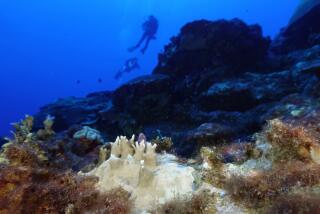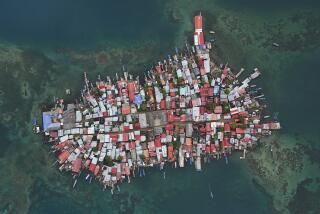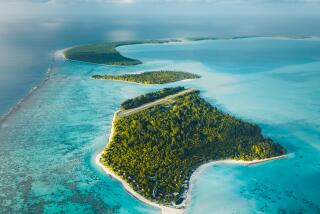Kiribati faces its future, and a rising ocean
Recently, a curious case appeared before New Zealand’s High Court. The plaintiff, Ioane Teitiota, a resident of the island-nation of Kiribati, was seeking refugee status in New Zealand. His reasoning? Climate change and rising sea levels were making Kiribati uninhabitable. “There’s no future for us when we go back to Kiribati,” Teitiota argued.
I used to live in Kiribati, a remote nation of 33 atolls in the equatorial Pacific scattered over an area nearly two-thirds as large as the continental United States. When I lived there, in the late 1990s, the island elders were beginning to notice a strange new phenomenon. The spring tides, or king tides as they are sometimes called, were beginning to breach the typical high-water mark on the beach, inundating homes, flooding pig pens and streaming over the causeways that linked the islets of South Tarawa, where most of the nation’s 100,000 inhabitants resided.
In response, many families built sea walls made of coral, hoping to forestall the damage inflicted by the rising ocean. Surely, it was thought, these super tides were an anomaly. For more than 1,000 years, these islanders had lived on their atolls, the slim crests of undersea volcanoes, not more than 200 yards wide and rarely rising more than a couple of feet above sea level, without feeling threatened by the ocean.
Not long ago, I visited Kiribati and was struck by the changes. Those sea walls, built with hope, now look like the grim remains of ancient fortresses destroyed long ago. The coconut trees near shore — the source of the nutritious toddy that children drink for breakfast and provider of the copra that Kiribati depends on for its meager income — stand like mute sentries, dead and useless as they succumb to the tide. The groundwater is now so brackish that gardens refuse to grow.
On some of its islands, such as Abaiang, villages have been swept away; all that remains are the thatched roofs of homes and meeting houses, cresting above the water. It isn’t storms that are causing this ruination but rather the slow, steady rise of the tides that twice daily inundate the islands.
In response, the government of Kiribati bought land on the island of Vanua Levu in Fiji, where its people can again grow food and, eventually, resettle as their country sinks below the waves. “This is the last resort,” President Anote Tong has said. “There’s no way out of this one. Our people will have to move as the tides have reached our homes and villages.”
The United Nations-backed Intergovernmental Panel on Climate Change, in a report released in September, concluded that climate change is unequivocal and that we can expect sea levels to rise upward of three feet by 2100. The report’s scientists were 95% certain that such changes to our planet are the direct consequence of human activity and resultant emissions.In a report leaked Friday, the IPCC noted that as a result of climate change, we can expect food production to decline by 2% each decade for the rest of the century, even as demand soars.
Meanwhile, in the northern Chinese city of Harbin in October, the index that measures particulate matter reached 1,000, far exceeding the 300 reading that the World Health Organization deems hazardous. In Singapore, the city suffocates from the smog caused by fires started by farmers clearing brush in Indonesia, the world’s third-largest emitter of greenhouse gases. And in the U.S., we celebrate as the boom in shale and fracking has allowed us to surpass Saudi Arabia as the world’s leading oil producer. No wonder the Ford F-Series pickup truck is the bestselling vehicle in America.
We don’t think much about climate change and rising sea levels here in the U.S. Beyond a few gardeners, birders and hikers who notice the changes in our own ecosystem, we live on, blissfully unaware of our changing Earth. Our storms — Katrina, Sandy — are dismissed as once-in-a-century events. Our heat waves and droughts? Well, they’ve happened before.
But out there, on faraway islands like Kiribati, Tuvalu, the Marshall Islands, the Maldives, their world is ending, and soon, millions of climate refugees like Teitiota will wander the planet looking for a new home as theirs go the way of Atlantis. Today, the islanders are the canaries in the coal mine. The least we could do is pay attention. After all, their present portends our future.
J. Maarten Troost is the author of “The Sex Lives of Cannibals” and most recently, “Headhunters on My Doorstep.”
More to Read
A cure for the common opinion
Get thought-provoking perspectives with our weekly newsletter.
You may occasionally receive promotional content from the Los Angeles Times.










